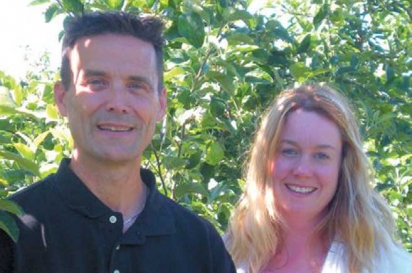How To Grow Apples: The Bounty of the Season
Eating and preserving foods that are in season is a practical way to enjoy the bounty of the season and save money. The advent of grocery stores and shipping foods has resulted in many of us forgetting how to eat seasonally. Eating seasonally is simply eating and preserving foods when they are at their peak of nutrition and flavor.
This season, Door County has a bumper crop of apples. We cannot predict next season, so this year, consider canning some of this season’s harvest: homemade applesauce, apple slices, apple pie filling, apple butter or a chutney. You can revisit the season when you pop the top on your canning jar in the middle of winter. The fresh apple scent and the still visible apple chunks can quickly bring you back to that warm fall harvest day. Oh! The flavor – when warm applesauce is paired with pork chops in the middle of winter the reason you “put up” food starts to makes sense.
The fall season would be remiss without apples in Northeastern Wisconsin. Starting in late August throughout October you will find a wide variety of apple varieties that are available for the picking. Make note of the availability of common apple varieties in this area.
This is the time of year to eat a few apples, but also preserve a few for the cold winter to come.
Growing Your Own
For those of you with an interest in growing your own apples, here are a few suggestions that will lead you on the path to becoming a successful orchardist. First, appreciate that humans aren’t the only species that will eat and enjoy apples. There are some major pests, including insect pests like plum curculio and codling moth and apple scab — a fungal disease.
To manage apple scab, consider selecting apple scab resistant varieties. For example, Honeycrisp, a local favorite, is very resistant to apple scab. Other apple scab resistant varieties include: Prima, Priscilla, Nova Easygro, Liberty, Nova Spy, Murray and Pixie Crunch. To manage insect pests in your backyard orchard, consider using some of the “softer” organic approved pesticides to protect your crop. A great reference is the “Midwest Tree Fruit Spray Guide” available at your local Extension office.
Often we get the question, “Can I plant this seed from my apple and grow a tree?” Not exactly. Apple trees are a combination of two different trees. The lower portion of the tree includes the roots and a short trunk, called the rootstock, and the upper portion of the tree is called the scion. The rootstock can do a number of things depending on the type, including reducing the size of the upper portion of the tree (i.e. dwarfing), providing resistance to certain soil-borne diseases, and/or precocious (early fruiting).
The upper portion of the tree, or scion, produces the fruit. When you see a tree labeled as dwarf or semi-dwarf, this is the result of the rootstock limiting the growth of scion. Dwarf trees are easier to manage when pruning, controlling pests and picking fruit. For successful tree growth, upon planting a fruit tree, never bury the graft union. The graft union is the large bump on the lower portion of the trunk.
If your backyard apple tree is ready for harvest or you’ve purchased freshly picked apples, here are some considerations in planning to preserve apples.
*What apple product will be used by your family? If your young children avoid new foods, an apple chutney or apple butter may not be worth your time and materials; perhaps applesauce or apple juice would be. If your adult children could be labeled as “Foodies”, consider preserving something out of the ordinary, such as apple butter, apple pie filling or a peach apple salsa.
*To peel or not to peel? Peeling will remove much of the conventional spraying residue. However, the peel contains most of the apple’s nutrition. Regardless of your choice, wash all apples just before preparing.
*Which variety of apple will you choose? There are so many throughout the season, consider mixing and matching for a unique product and texture.
*Will your product be “au natural” or “sweetened”? If you want your preserved fruit to be true to its shape, color and flavor, adding some amount of sweetener is necessary. The following sweeteners are good choices for canning: diluted or full strength fruit juice, juice syrups, sugar syrups or honey. Sugar substitutes containing aspartame and saccharine were not meant for heating and used in cooking since their chemical nature and flavor changes. Sucralose (Splenda) and Stevia (Truvia) may be used. Please follow the manufacturer’s directions.
APPLE FACTOIDS
1 bushel of apples = 48 pounds, which yields 16 quarts of applesauce
1 bushel = 4 pecks = 32 quarts raw/whole fruit
1 medium apple = 80 calories
1 apple = as much dietary fiber as a bowl of bran cereal; 20% of a day’s fiber needs.
The apple may be the most perfect “fast food”… even knocked around in a car or backpack, its integrity is intact, it’s easy to eat on-the-run and after eating one your stomach is satisfied for about an hour.
Apples contain pectin, a soluble fiber that aids digestion and limits the amount of cholesterol the body absorbs.





